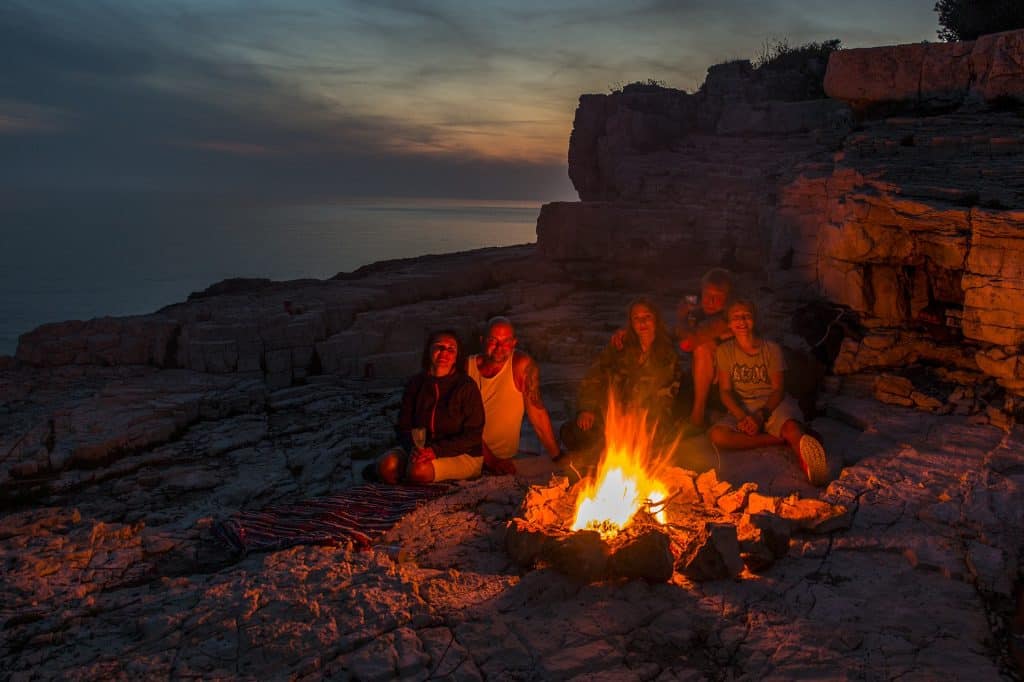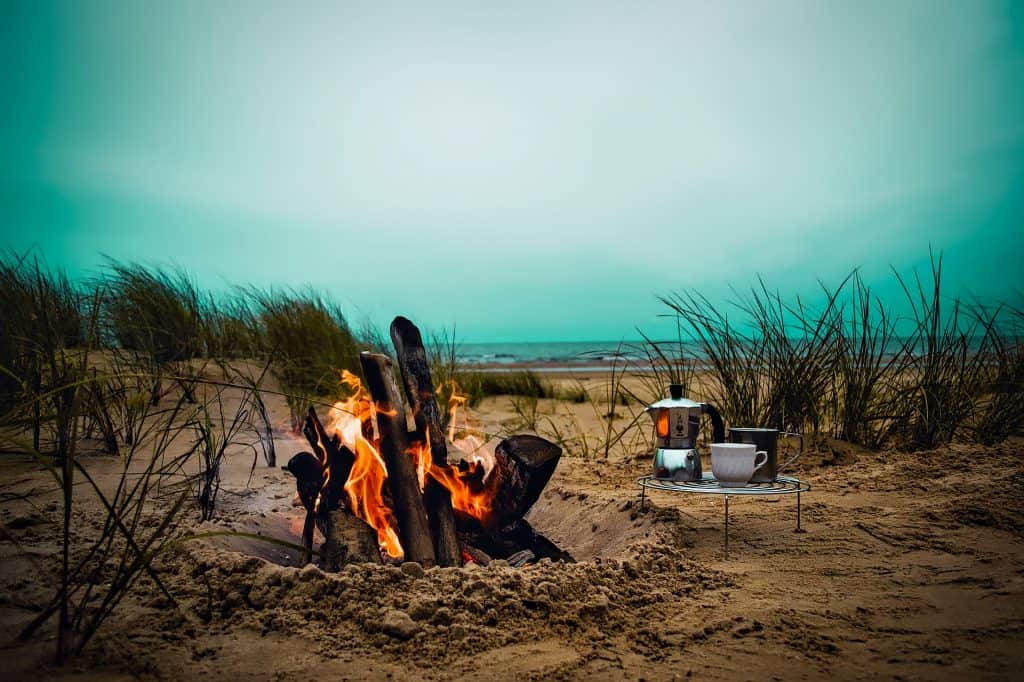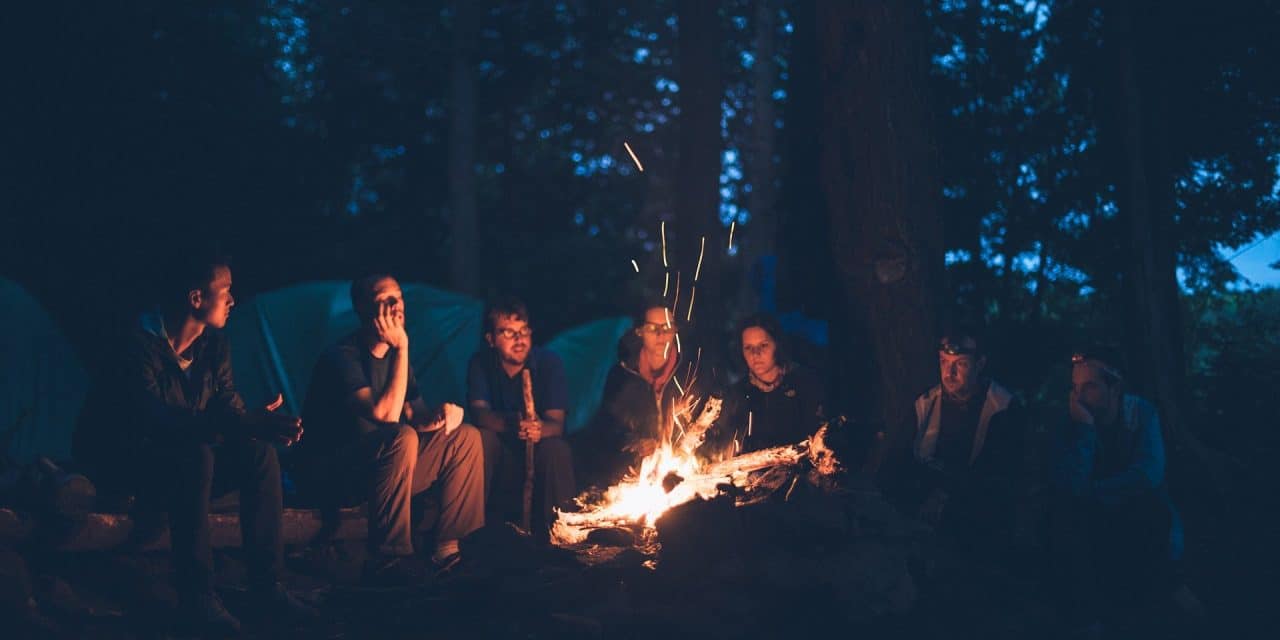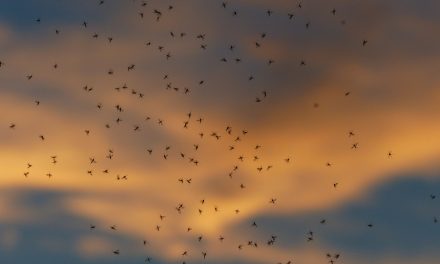Sitting around by the fire is one of the most enjoyable things to do on a camping trip. Who doesn’t love roasting s’mores and telling stories by a comforting flame under a starry night sky?
On the other hand, campfires happen to be one of the most dangerous aspects of camping. All it takes is a little bit of negligence for an innocent little flame to spread into a disastrous wildfire.
Camping fire safety is every camper’s responsibility. If you’re setting out to build a fire, here are a few key precautions to take.
Choosing a Safe Spot

If your campsite already provides a safe fire pit for you, then this step is already covered. If not, it’s definitely important to keep the following in mind.
First, avoid building any fire in excessively dry conditions — during a drought, for instance. The drier the land surrounding the fire, the higher the chances of the fire spreading out of control.
Ensure that your fire is built at least 15 feet away from any tents — whether yours or your neighbor’s.
Don’t build a fire under low hanging branches. Pick a level location, and make sure that it’s a safe distance away from large logs, dry bushes and decaying leaves.
If the wind is particularly strong, ensure that your spot is adequately sheltered. All it takes is one stray gust to spread the embers outside of your designated area.
Build your fire as close to a water source as possible to ensure that you’ll have plenty of water to put it out should anything go wrong.
Preparing the Campfire Pit

If there’s no prepared pit available at your campsite, you’ll have to build your own.
Once you have your site ready, prepare a diameter of at least 10-feet around it. Be sure to remove any twigs and grass from this area.
Next, it’s time to dig a hole for the pit. All you’ll need is about a foot of depth, and you’ll be good to go.
Form a circle of rocks around the fire pit. This will help control the spread of the fire should it start to get out of hand.
Now take a step back and savor the sight of your brand new, DIY fire pit!
Building the Campfire

Once your fire pit is set up, it’s time to get that campfire going. The first step is to start gathering wood for the fire.
There’s no need to cut live material off trees or branches. Not only does live material fail to burn, but it also causes unnecessary harm to the forest.
Don’t rob precious fauna of their homes for no good reason!
Another thing to keep in mind — be sure to only use firewood that’s local to the camping grounds. Bringing wood from an outside forest invites the risk of damaging insects and diseases entering the area.
Instead, look for these three types of wood:
- Tinder: Any dry leaves, grass, needles and small twigs will do.
- Kindling: Small sticks found on the ground — ensure that they’re less than 1” thick.
- Fuel: These are the larger pieces of wood that fuel the fire.
Place some handfuls of tinder directly in the middle of the pit, then add the kindling in a crisscross formation over the tinder.
Use a match to ignite the tinder. It’s important to wait until the match is fully out before tossing it into the fire.
The flame should be growing now — keep adding tinder to help it along.
Blow at the base of the fire — lightly, so as not to offset the embers.
Once the fire has grown to your liking, it’s time to add more kindling along with fuel (the larger woods you’ve gathered). Ensure that the fuel is stored upright and safely away from the fire pit.
Now you’ve got a fire going!
Maintaining the Campfire

Starting the fire is only half the battle. The real responsibility comes with maintaining and extinguishing the camping fire.
Stick to your natural fuel, and don’t burn any man-made objects like lighters, cans, or any sort of container. Not only can these objects create hazardous fumes, but some can also explode and spread the fire outside of the pit.
Make sure to keep the fire small enough to control. A good rule of thumb is not to let it grow more than one meter wide and one meter high.
Keep wind levels in mind. A light breeze is fine, but if the fire looks like it’s itching to spread with every strong gust that comes its way, it’s best to keep it to a very small size or put it out entirely.
In a worst-case scenario, ensure that everyone — especially the kids — knows the stop, drop, and roll rule.
Be very careful with letting pets near the fire. If you know your pet well enough to keep them around the pit, the risk is yours to take. If you’re doubtful at all, it’s best to tie them on a leash to a nearby tree or bush.
Make sure that you have a clear path to your water source at all times, and ensure that there’s a shovel nearby so you can layer some dirt over the fire pit if the flames grow too strong.
Always watch the fire — never let it leave your sight. All it takes is a few seconds for a fire to spread out of control.
Extinguishing the Campfire
When the fun is done, it’s time to put those flickering flames out safely.
There are a few ways to put out a fire, but the best option for beginners is to simply throw dirt and/or water over it until it’s out.
Add water to the coals until they’re soaked all the way through, stirring them around until you’re sure that they won’t start another fire once you turn away.
If you hear the slightest hissing sound from the coals, that means you need to pour more water. The safest option is to allow the wood to burn to ash entirely. However, if you’re prudent enough while putting out the fire, this isn’t necessary.
Safety First
A camping trip isn’t much of a trip at all without a campfire. Still, despite the warmth and enjoyment it provides, fire can be incredibly dangerous.
Be prudent with each step involved in building the fire, keep an eye on the flames as they flicker, and put the fire out safely.
For specific laws and information about camping fires in Australia, visit the Department of Fire & Emergency Services. For US laws, visit the U.S. National Park Service.
- Tent Fabrics, the Ultimate Breakdown - November 19, 2022
- Don’t Go Camping Alone Before Reading This - November 18, 2022
- The 5 Best Camping Radios For 2021 - June 2, 2020






